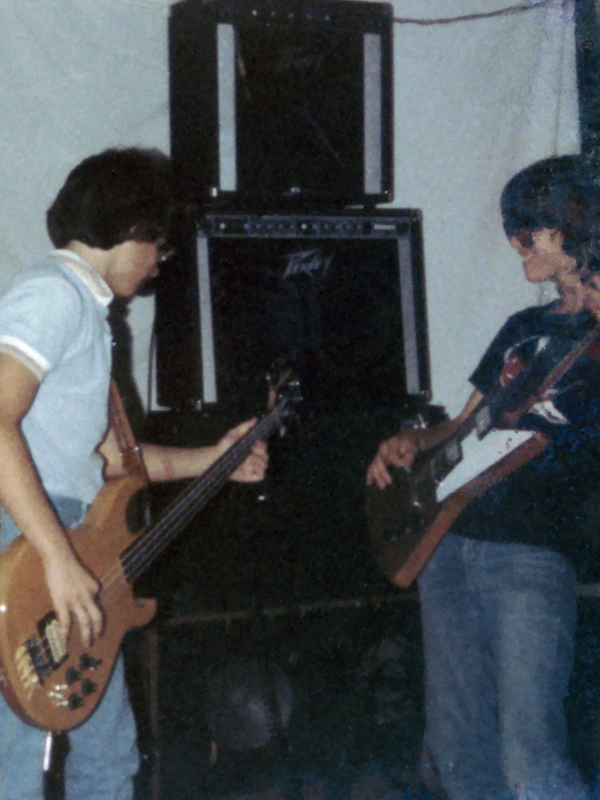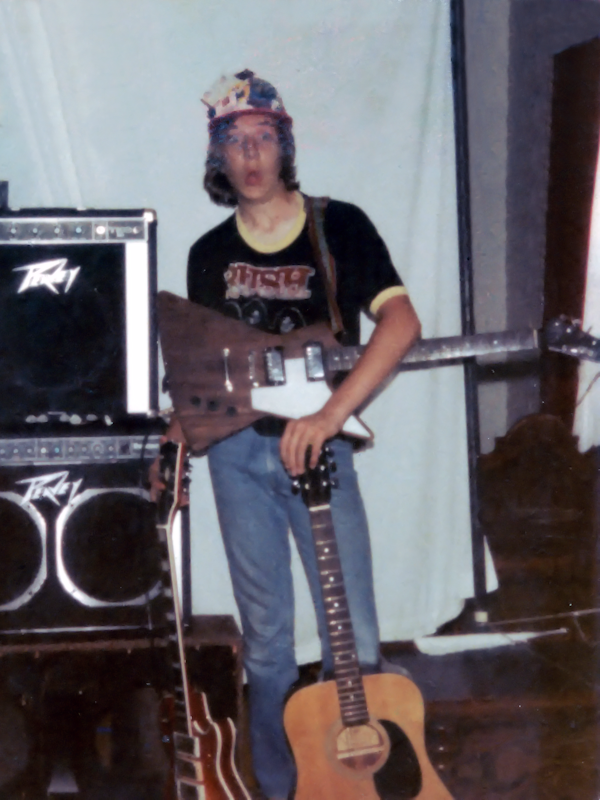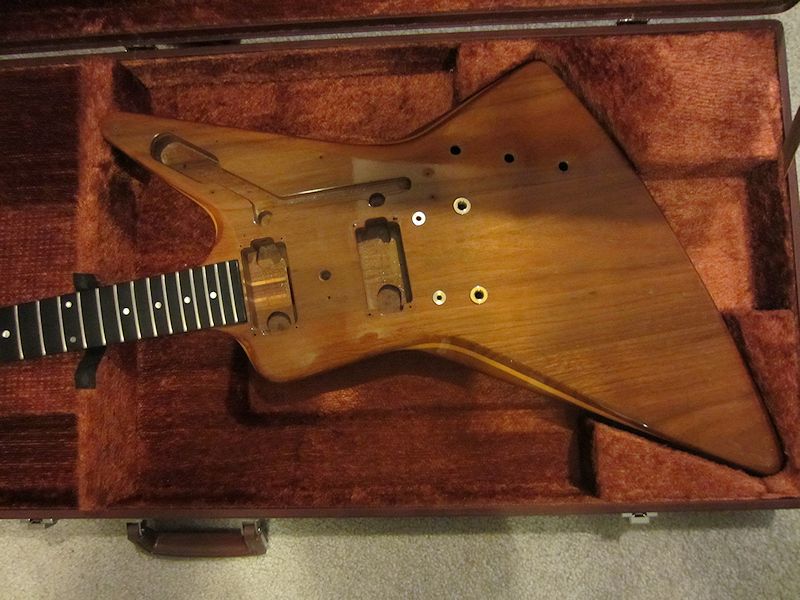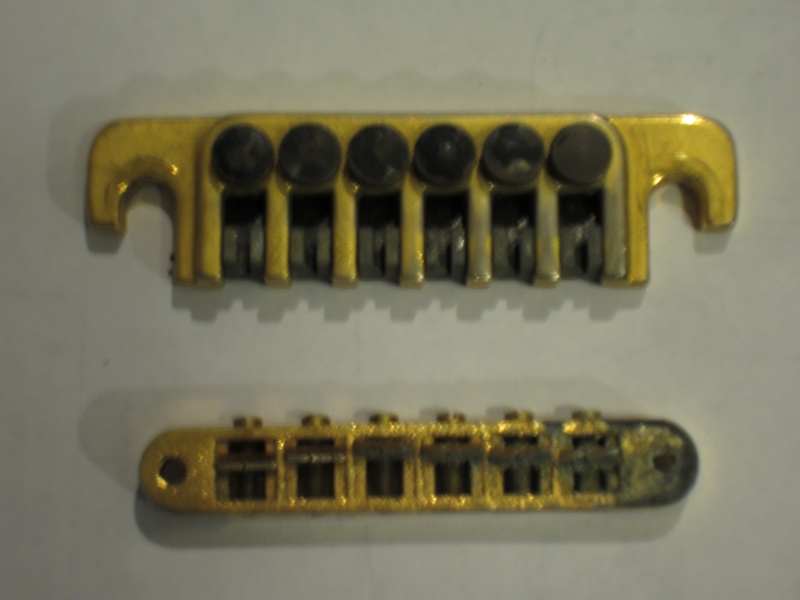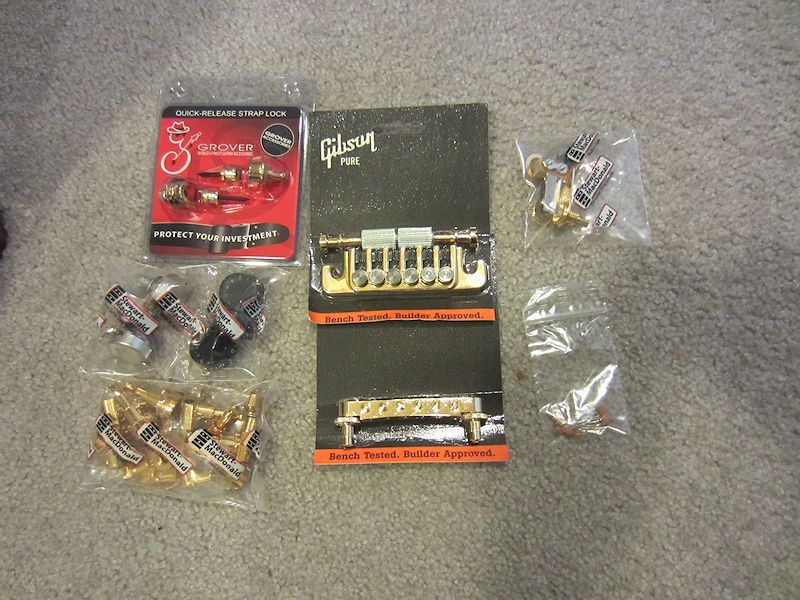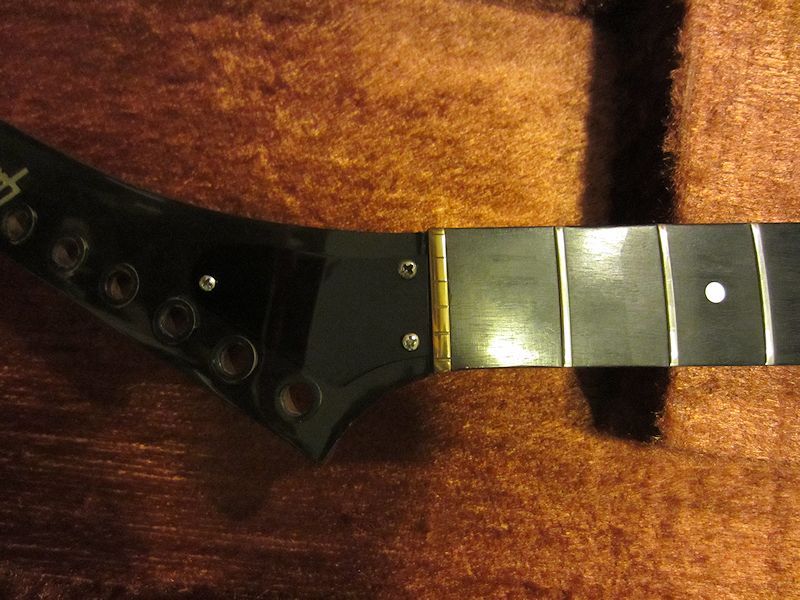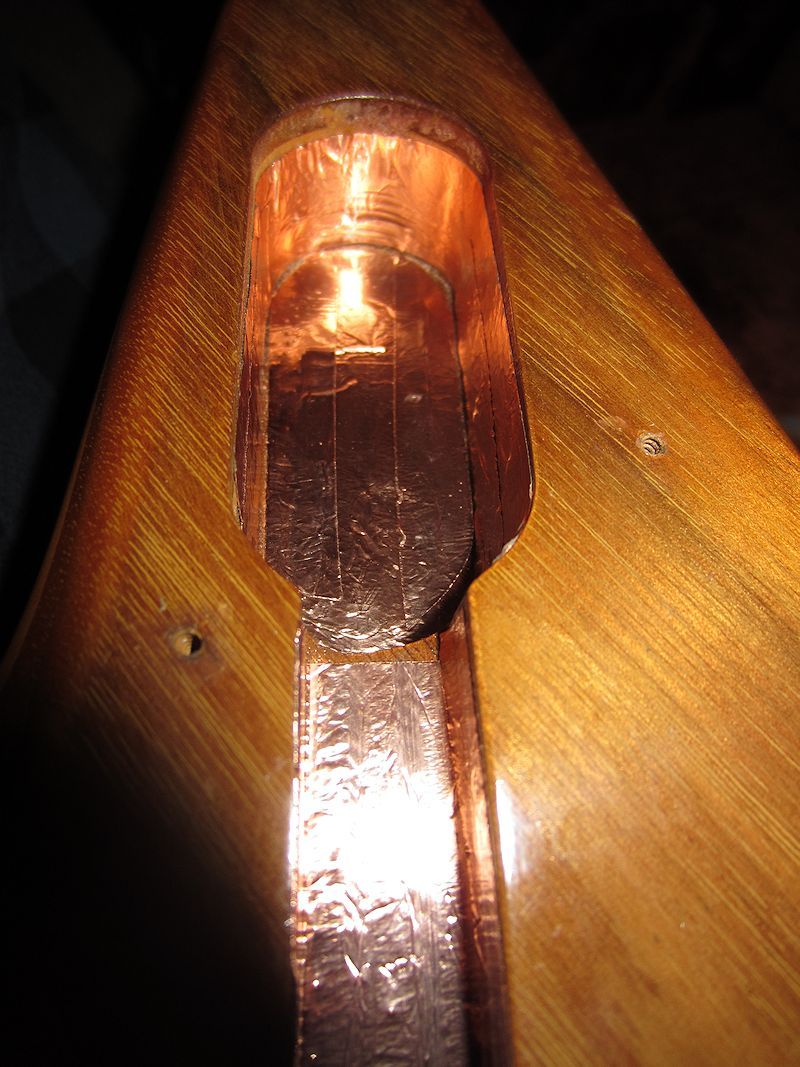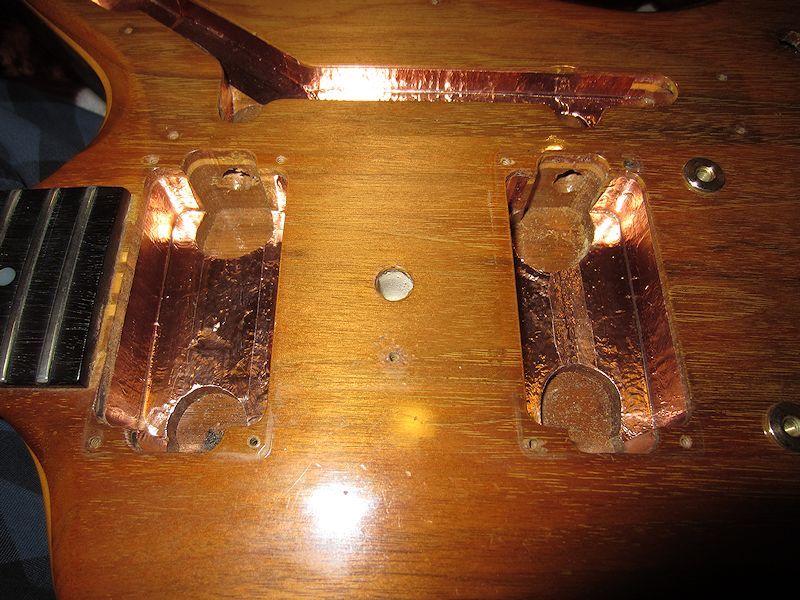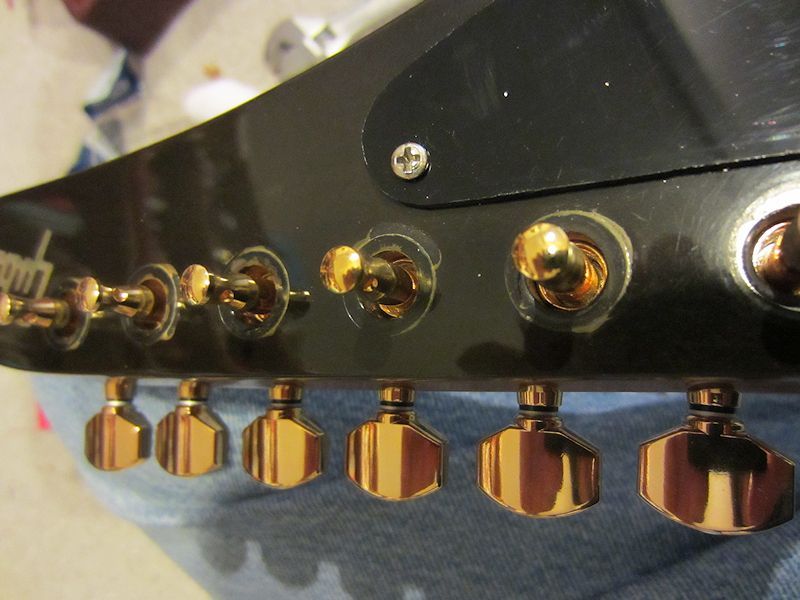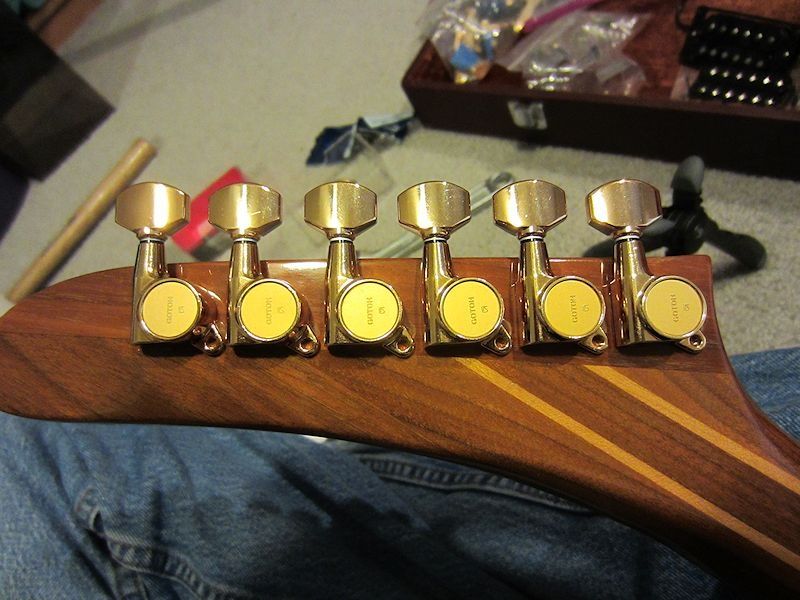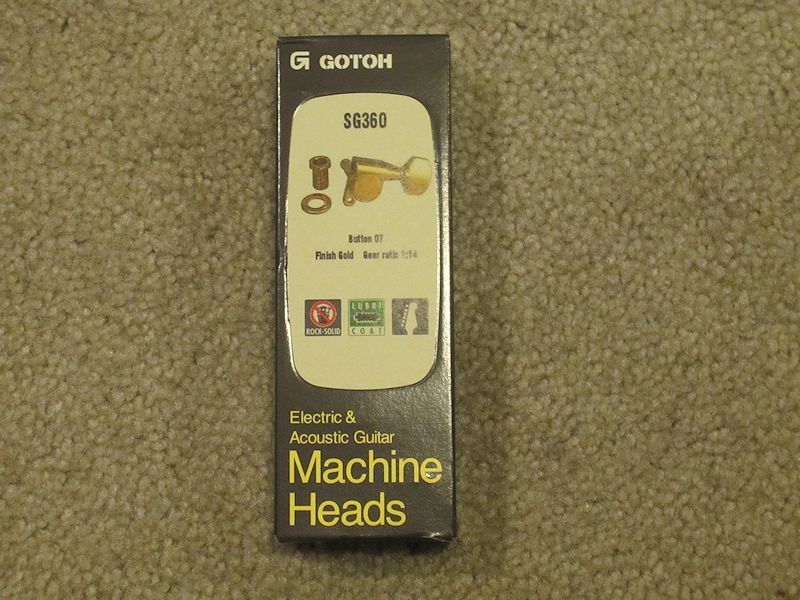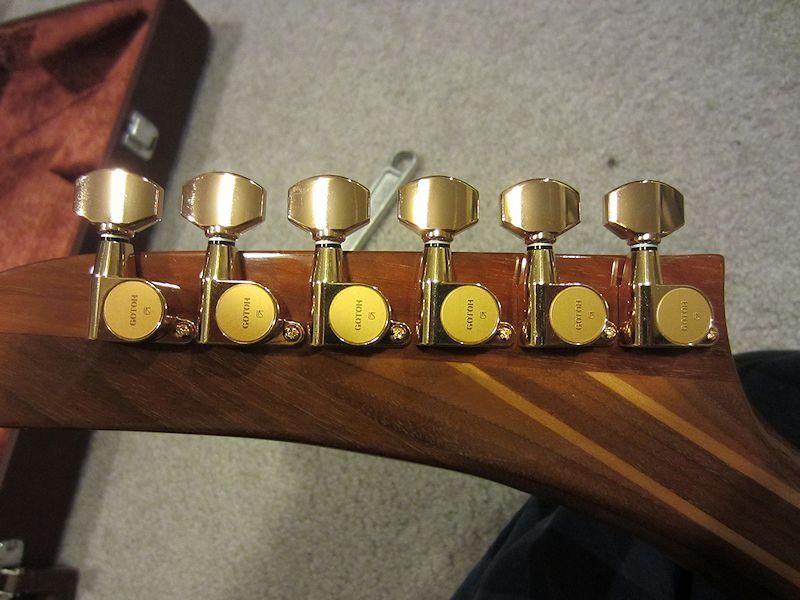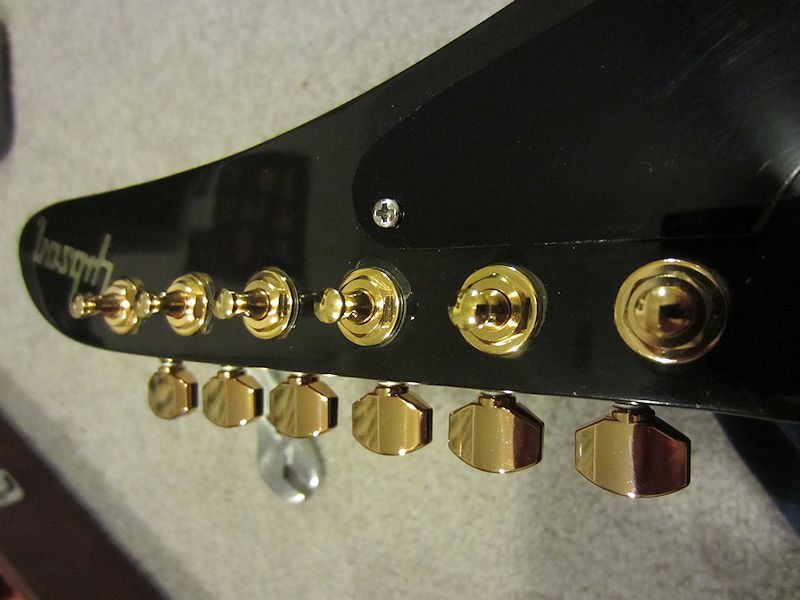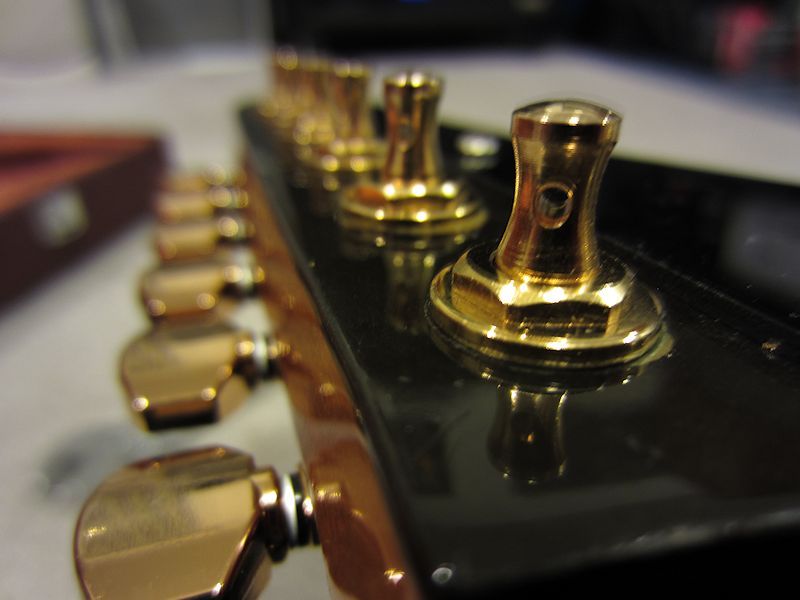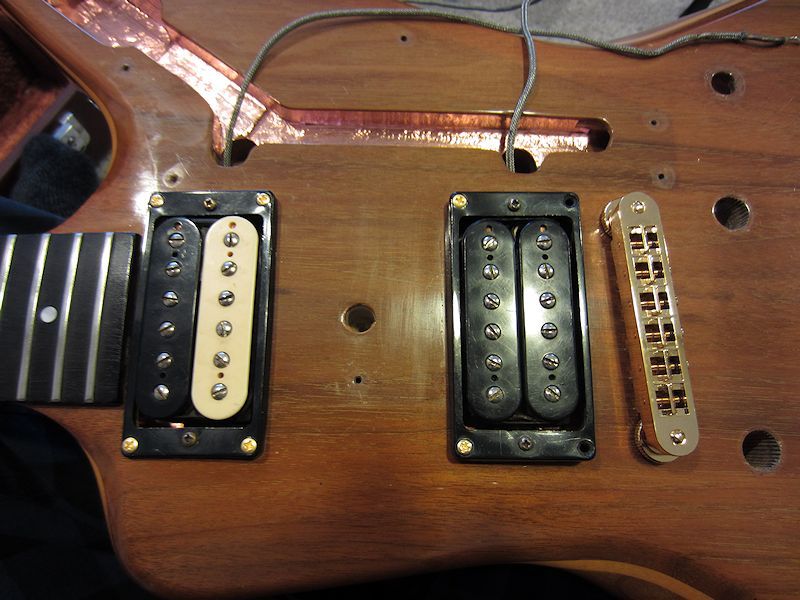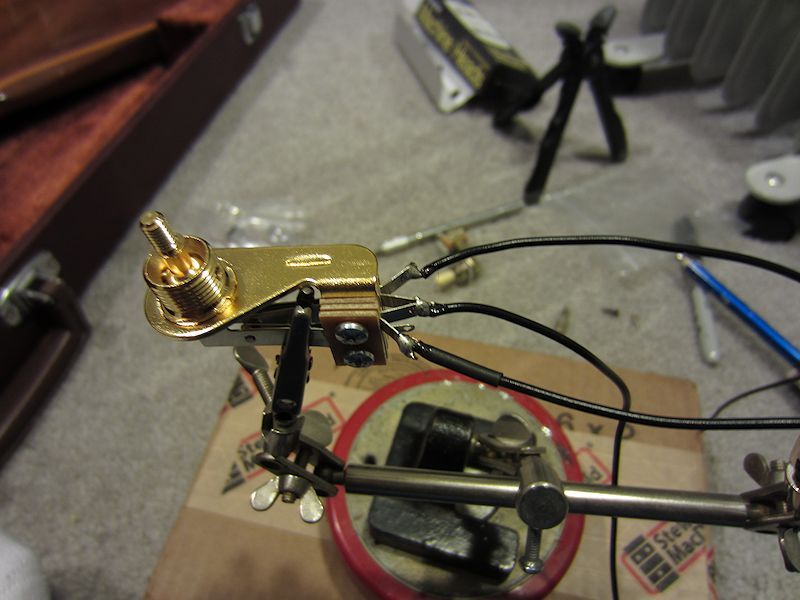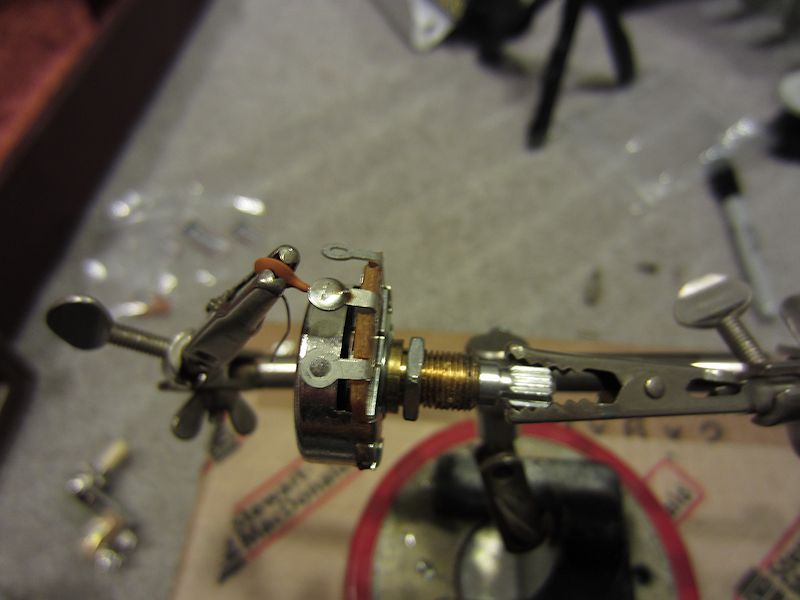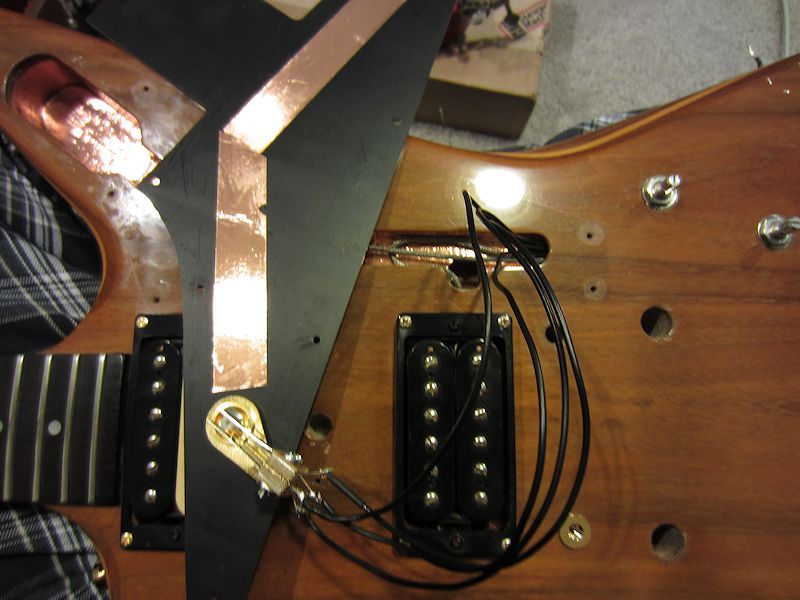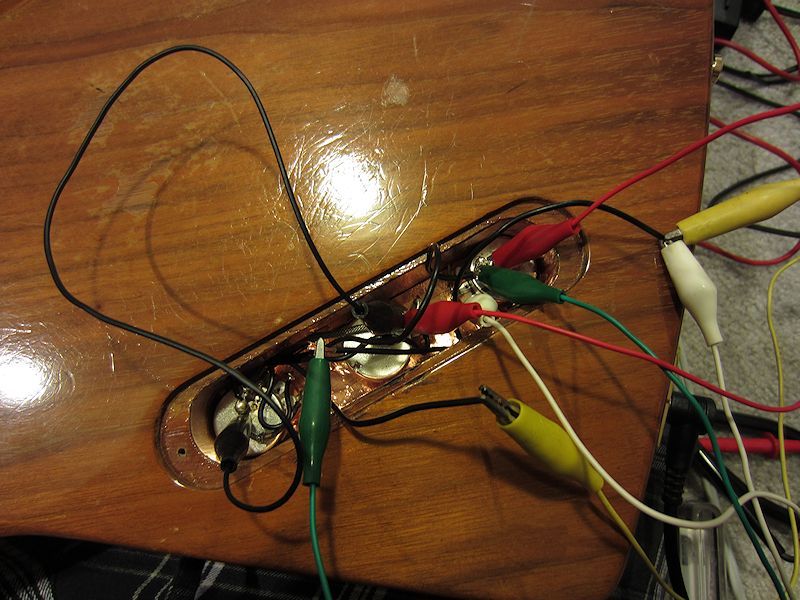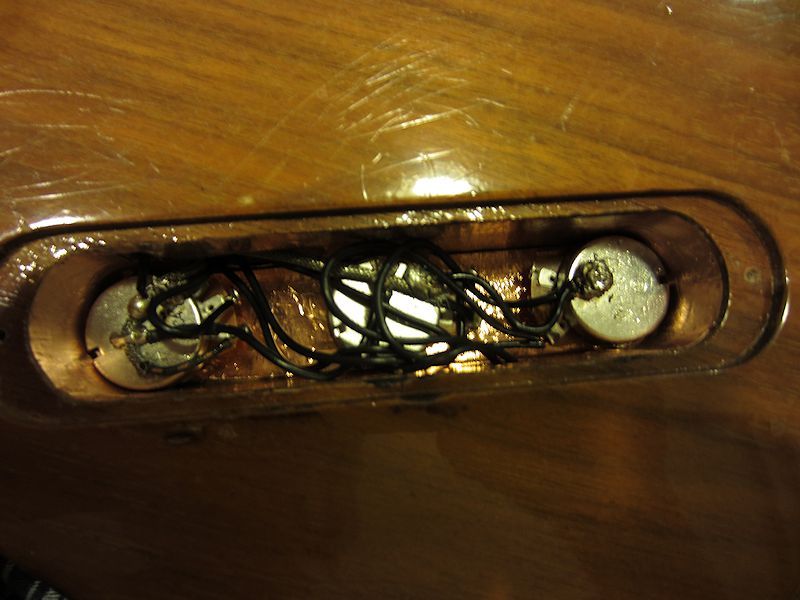A=432Hz Tuning versus A=440Hz Tuning
22 April 2013 • by Bob • Guitar, Music
A coworker recently pointed me to the following blog post, and he asked if it had any basis in reality: 432Hz: Crazy Theory Or Crazy Fact. After looking at that blog, I think a better title for it would be "432Hz: Misinterpreted Theory and Misconstrued Facts." I honestly mean no disrespect to the author by my suggestion; but the blog's author clearly does not understand the theory behind what he is discussing. And because he misunderstands some basic concepts, his discussion on this subject offers little by way of practical information. As such, I thought that I would set the record straight on a few things and offer some useful information on the subject.
First of all, the author's suggestion that using A=432Hz for a reference when tuning will put your guitar in Pythagorean Tuning is completely false; all you are doing is changing the base frequency that you are using, but your guitar will still be in Standard Tuning.
Discussing the base frequency is about as effective as discussing the merits of an E-Flat Tuning versus Standard-E Tuning; either one is fine, and it just comes down to user preference as to which one is better. The same thing holds true for choosing A=432Hz over A=440Hz - it's a preference choice. (Unless you have Perfect Pitch, in which case A=432Hz is probably going to annoy you more than words can say.)
However, there is one major difference: if you choose to record music by using an other-than-normal base frequency, you'll frustrate the heck out of someone who just tuned their guitar with a standard tuner and attempts to sit down and learn your music. ("Hmm... this just doesn't sound right.") And you could retune just to annoy them for fun, of course. ;-]
That being said, any discussion of Pythagorean Tuning and the guitar is utterly useless, because a guitar is not fretted for Pythagorean Tuning. Here is where the real confusion lies, because the author of that blog is confusing changing the base frequency with somehow putting the guitar into a different temperament, which is not possible without re-fretting your instrument. Here's what I mean by that:
The physical interval between the frets on a guitar neck is based on Equal Temperament, which is a constant that is defined as the 12th root of 2. In Microsoft Excel that formula would be 10^(LOG(2)/12), which comes to 1.0594630944. We all know that an octave is double the frequency of the base pitch, so with A=440Hz you would get A=880Hz for the next higher octave. By using the above constant, you can create the following scale from an A to an A in the next higher octave by multiplying each frequency in the scale by the constant in order to derive the resultant frequency for each successive note:
Note | Frequency |
|
|---|---|---|
A |
= |
440.00Hz |
Bb |
= |
466.16Hz |
B |
= |
493.88Hz |
C |
= |
523.25Hz |
C# |
= |
554.37Hz |
D |
= |
587.33Hz |
D# |
= |
622.25Hz |
E |
= |
659.26Hz |
F |
= |
698.46Hz |
F# |
= |
739.99Hz |
G |
= |
783.99Hz |
Ab |
= |
830.61Hz |
A |
= |
880.00Hz |
In contrast to the claims that were made by the blog's author, you do not magically get whole-number frequencies (e.g. with no decimal points) if you change the base frequency to A=432Hz; the math just doesn't support that. Here is the list of resulting frequencies for an octave if you start with a base frequency of A=432Hz, and I have included a comparison with a base frequency of A=440Hz:
Note | Frequency 1 | Frequency 2 |
||
|---|---|---|---|---|
A |
= |
432.00Hz |
<-> |
440.00Hz |
Bb |
= |
457.69Hz |
<-> |
466.16Hz |
B |
= |
484.90Hz |
<-> |
493.88Hz |
C |
= |
513.74Hz |
<-> |
523.25Hz |
C# |
= |
544.29Hz |
<-> |
554.37Hz |
D |
= |
576.65Hz |
<-> |
587.33Hz |
D# |
= |
610.94Hz |
<-> |
622.25Hz |
E |
= |
647.27Hz |
<-> |
659.26Hz |
F |
= |
685.76Hz |
<-> |
698.46Hz |
F# |
= |
726.53Hz |
<-> |
739.99Hz |
G |
= |
769.74Hz |
<-> |
783.99Hz |
Ab |
= |
815.51Hz |
<-> |
830.61Hz |
A |
= |
864.00Hz |
<-> |
880.00Hz |
When you look at the two sets of frequencies side-by-side, you see that tuning with either base frequency yields only two even frequencies - one for each of the A notes. However, when you use the standard A=440Hz tuning, you have two frequencies (the F# and G) that almost fall on even frequencies (at 739.99Hz and 783.99Hz respectively). Not that this really matters - your ear is not going to care whether a frequency falls on an even number. (Although it might look nice on paper if you have Obsessive Compulsive Disorder and you rounded every frequency to the nearest whole number.)
Since the frets on the guitar are based on this temperament, that's all you get - period. You can fudge your base frequency up or down all you want, but in the end you're still going to be using Equal Temperament, unless you completely re-fret your guitar as I already mentioned. (Note: See the FreeNotes website for guitar necks that are fretted for alternate temperaments.)
If you had a background that included synthesizers, (and as a guitar player I must apologize for my side hobby on keyboards), you might remember that back in the 1980s there was a passing phase with microtonality on keyboards. If you had a keyboard that supported this technology, you were able to play your keyboard by using intonation that was different than the Equal Temperament, which was sometimes pretty cool.
Why would someone want to do this? Because many of the old composers never used Equal Temperament; that's a fairly recent invention. So if you want to hear what a piece of piano music sounded like for the original composer, you might want to set up your keyboard to use the same microtonality temperament that the composer actually used.
But that being said, before the invention of Equal Temperament, there were several competing temperaments, and each was usually based on tuning some interval like the fourth or fifth by ear, and then finding intervals in-between those other intervals that sounded acceptable. What this resulted in, however, were a plethora of tunings/temperaments that sounded great in some keys and terrible in others. More than that, if you continue to work your way up a scale based on intervals based on sound, you will eventually introduce errors. Using the actual Pythagorean Tuning suffers from this problem, so if you put a microtonal keyboard into Pythagorean Tuning and attempted to play a piece of music that extended past a couple of octaves, it sounded terrible. (See Pythagorean Tuning for an explanation.)
But on that note, almost every guitarist suffers from this same problem, but you just don't know it. Have you ever tuned your guitar by using the 5th fret and 7th frets harmonics? Of course you have, and so have I. But here's a side point that most guitarists don't know - when you tune your guitar by using those harmonics, you slowly introduce errors across the guitar, and as a result it will seldom seem completely in tune with itself.
Here's an excerpt from a write-up that I did for the Christian Guitar website a while ago that describes what I mean:
There have been many different temperaments used in the Western Hemisphere, and many of these centered around specific intervals. For example, start with a C note, then find the perfect octave above; you now have the starting and ending points for your scale. Next, find the harmonically perfect 5th of G by tuning and listening to pitches, then use these intervals to find E, which is the major 3rd. Once done, you now have three notes of your scale and the octave. If you jump up to G and use the same process to find the 3rd and 5th, you get the B and D notes. If you keep repeating the process, you eventually derive all of the diatonic notes for your major scale. On a piano that would be just the white keys.
Leaving sharps and flats out of this example, (the piano's black keys), the problem is that if you keep using the perfect 5th for a reference, you gradually find that the notes in your scale are not lining up as you travel around the circle of 5ths. This occurs because using perfect 5ths will eventually introduce slight errors on other intervals, and the result will be that your scale works great in one or two keys, but other keys sound noticeably awful.
Here's why this happens: after having gone around the entire circle using perfect 5ths as a tuning guide, by the time you get to the octave above your starting note, the physical frequency for the octave is not the same as the last pitch that you derived from tuning based on the perfect 5ths. This is especially problematic when you use one particular note/key to tune an instrument, and then try to play in another key. For example, if you tune an instrument using perfect 5ths and start on a C note, the key of C# will sound distinctively out-of-tune.
The only trouble that some people might have with equal-temperament is that the intervals within the octave are not based on perfect intervals, but rather intervals based on the constant. This causes a lot of problems with people who tune by ear using perfect 5ths, which many guitarists do without realizing when they tune their guitars using harmonics over the 7th fret.
For example, if you were to tune an E note using an A note as a reference point, your ear would want to hear the perfect 5th for E which is 660.00Hz, not the equal-tempered E that is 659.26Hz. Although the difference is very small, it is compounded over time as you tune the other notes within the scale. If you continued to tune using 5ths, your next note higher would be the B that is a 5th over E. Your ear would want to hear the perfect 5th again, so you would wind up with 990.00Hz for B instead of the equal-tempered 987.77Hz. Another perfect 5th would be 1485Hz instead of the equal-tempered 1479.98Hz, then 2227.50Hz instead of 2217.46Hz, etc.
I personally find the math part of music fascinating, and I've obviously spent a bunch of time (perhaps too much time ;-]) studying notes, scales and tunings from a mathematical perspective. Because of that, I view the whole guitar neck as a numerical system and all chords/scales as algorithms. I know that's really geeky, but it's still pretty cool. In the end, I think that math might be my 2nd-favorite part of music. (My favorite part is turning the amps up to 11 and feeling the actual notes as they tangibly pass through my body - it's like a physical feedback loop. Very cool...)
The net result of this discussion is - use a tuner when you are tuning your guitar, not your ear. And it doesn't matter what your base frequency is when you are tuning your guitar - you are still using Equal Temperament because that's the way that your guitar is made. ;-]
Restoring an Old Friend Back to Life
28 November 2012 • by Bob • Guitar
My Love Affair with Explorer-style Guitars
Many years ago - more years than I will care to admit - I saw Cheap Trick in concert. (Okay, just to give you an idea of how long ago this was - Cheap Trick was touring to promote their Cheap Trick at Budokan album; you can do the math from there.) At this point in my life, I hadn't been playing the guitar for very long, and my main guitar at the time was a cheap 3/4-size nylon-string acoustic that my dad had bought for me from a store on a military base. Military bases aren't known for keeping great guitars in stock, so it needs little explanation that I was fascinated by any cool guitar that came along. This made seeing Cheap Trick even more entertaining, because their lead guitar player, Rick Nielson, used something like 1,000 different guitars throughout the show.
But one particular guitar caught my eye - an Explorer; something about it's futuristic shape seemed to me like the coolest guitar ever. Rick Nielson played an Explorer from Hamer Guitars, but I soon learned that Hamer's Explorer was a copy of the Gibson Explorer, and that became the 'Guitar to Have' for me.
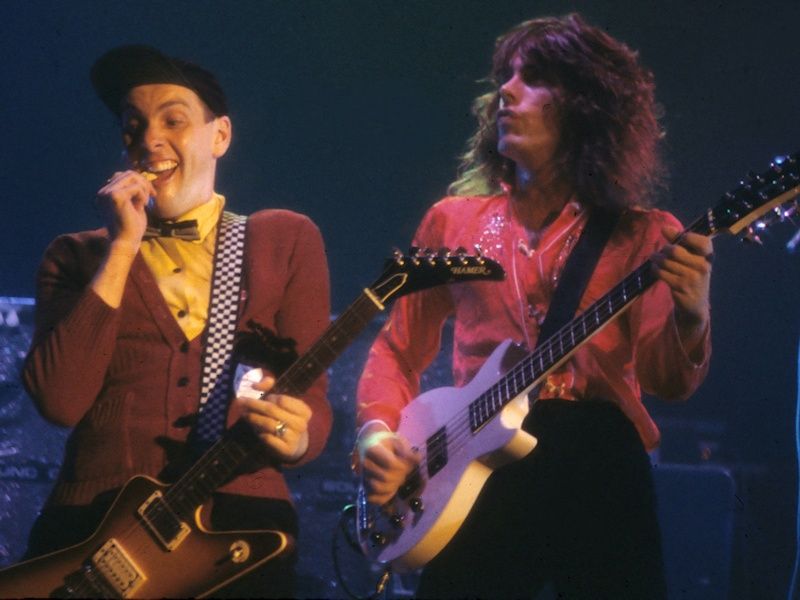 |
| Rick Nielson (left) playing a Hamer Explorer onstage with Cheap Trick. (Note: This image is originally from Wikipedia.) |
About this time I was in my first rock band with my good friend Gene Faith. Even though we both actually played the guitar, we liked to create fake instruments for ourselves - I made myself a fake guitar out of scrap wood that looked like an Explorer, even though it was hollow and had strings that were made out of rubber bands. But it was cool - there was no doubt in my mind about that. Once we had some 'instruments' at our disposal, we'd put on a record and pretend to actually play these fake instruments and jump around my dad's living room like we were rock stars. (Hey, don't laugh so hard - I was only 12 or 13 years old.)
My first electric guitar was a cheap copy of a Gibson SG that I purchased at Sears for somewhere around $100. (And believe me - I delivered a lot of newspapers to earn the $100 to buy that guitar.) It was okay as a starter guitar, but I soon found myself wanting a better axe. A year or so later I saved up more of the proceeds from my newspaper route and I bought an Explorer copy from an off-brand company named Seville - it was nowhere near as good as a Gibson, but it was the best that I could do on a paperboy's budget. It had a hideous tobacco sunburst paint job, so I removed the neck and hardware, sanded the body down to the bare wood, stained it with a dark wood color, and then I shellacked the body with a clear finish. When I reassembled the guitar, it looked pretty good. I played that Explorer for a few years, and I eventually sold it to my friend Gene.
Jumping ahead a few decades, another good friend, Harold Perry, was moving from Seattle to San Francisco, so he was parting with a bunch of musical gear. I'm always in the market for seasoned gear that needs a new home, so Harold and I were going through a bunch of his old items while I was deciding what I might want to buy. Harold had bought a 1980 Gibson Explorer II several years earlier as a 'project guitar' - it had been badly treated by a previous owner and needed a lot of repair work. Since Harold was moving, he didn't expect to have time to finish the guitar, and he wanted it to find a good home, so he sold it to me for a great price.
And so my adventure with guitar restoration began as a labor of love.
Restoring My Gibson Explorer II
When I took the guitar home, the first thing that I did was strip all of the remaining hardware off the guitar; thereby leaving nothing but the wood body. I then proceeded to polish every inch of the guitar for a few hours. Whoever had owned the guitar before Harold apparently had some hygiene issues and it seemed like he had never cleaned the guitar despite voluminous amounts of caked sweat that coated much of the surface. What's more, his sweat had corroded all of the stock hardware, so nearly all of the hardware would need to be replaced. With that in mind, I decided that this would be a long-term project and I would take my time with it.
The next thing that I needed to do was to polish the hardware that I intended to keep - which was just the brass nut and frets, all of which looked pretty hideous. I used Mr. Metal to polish the hardware, which seemed a strangely apropos title for a former heavy metal dude.
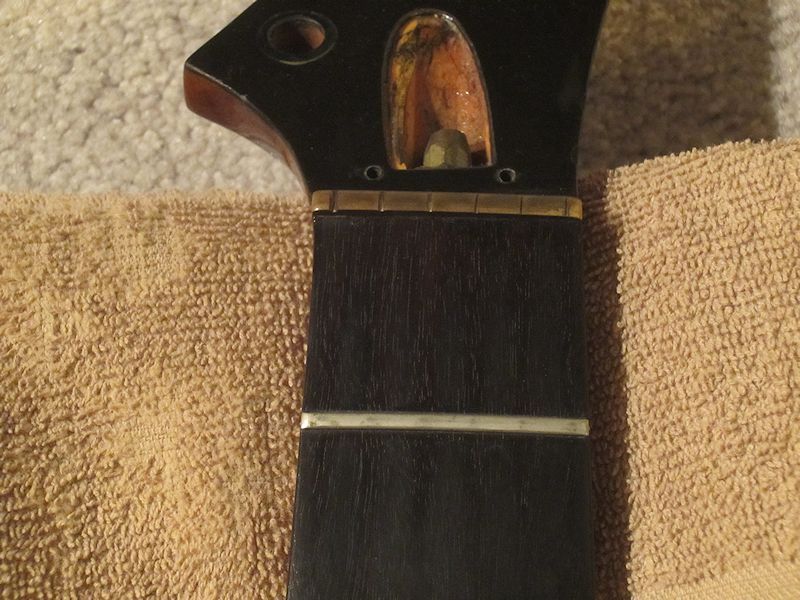 |
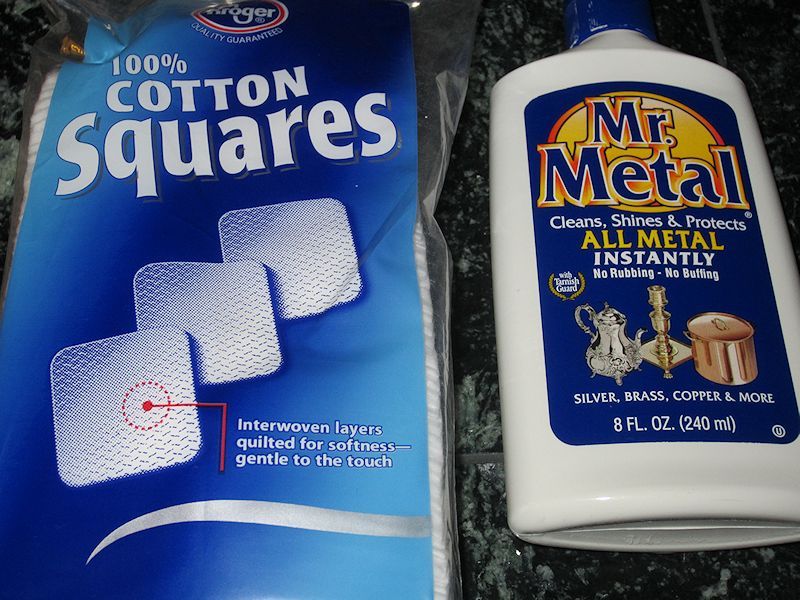 |
| Badly-tarnished frets and nut. | Dude - it's "Mr. Metal." :-O |
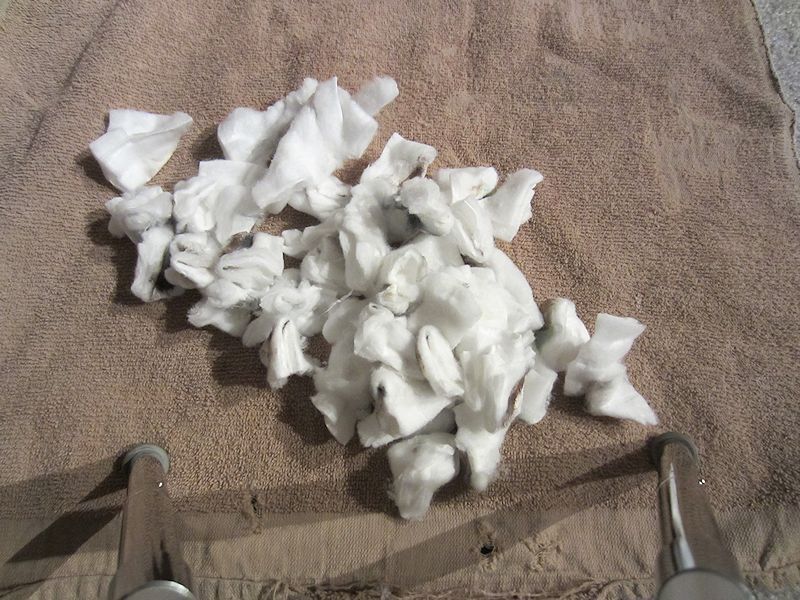 |
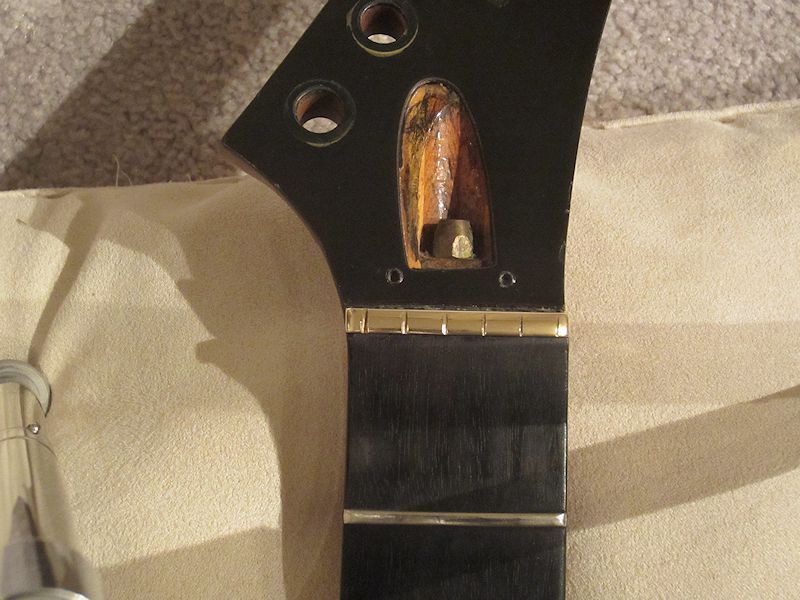 |
| The pile of used cotton patches after I finished polishing. |
Shiny frets and brass nut! |
Over several months I slowly bought new hardware that I needed. I'll spare you most of the details, but suffice it to say that it took a long time for me to locate and purchase all of the right replacement parts that I wanted. I primarily bought the hardware from Stewart McDonald, Musician's Friend, and Guitar Center, and I had the guys at Parson's Guitars create a new truss rod cover to replace the original that had been lost before the guitar had found its way to me. In the end, I replaced the bridge, tailpiece, volume & tone potentiometers, tuning machines, strap locks, toggle switch, and speed knobs. (The folks at Parson's Guitars thought that replacing the stock Gibson parts was a sacrilege, even though I explained that keeping the stock parts left the guitar unplayable.)
Before I started wiring the guitar, I lined the inside of the routing cavities with copper tape - this is supposed to reduce EMI on the guitar. I've never used it before, so it's something of an experiment. In any event - lining the routing took several hours to complete; time will tell if it was worth it.
The next part of the project was to install the new guitar tuning machines. Oddly enough, Gibson won't sell their inline-6 set of tuners for an Explorer to customers, so I had to buy tuning machines from another company. I eventually decided on tuning machines from Gotoh, which I was able to order through Stewart McDonald. The trouble is, once I mounted them on the headstock, I discovered that the screw holes for the tuning machines were off by a little over a millimeter. (If you look at the image, you can see that the screw holes are angled slightly downward on the right side of the machines, but they needed to be perpendicular to the machine shafts.)
After doing some additional research, I discovered that the only Gotoh tuning machines that Stewart McDonald sells are Gotoh's SG381 tuning machines, and I needed their SG360 tuning machines for my Explorer. After a quick call to Stewart McDonald, I verified that they cannot order Gotoh's SG360 tuning machines for me, so I searched the Internet until I found a distributer in Australia who could ship them to me. It took several weeks for the tuners to make the journey to the United States, but when they arrived they were a perfect fit.
Once I had the right tuning machines installed, I started the long process of wiring and soldering the electronics.
Once I completed the wiring, the last hurdles were to re-string the guitar, tune it up, adjust the string height and intonation, and test it out. (Which is the fun part.)
That about sums it up. The guitar looks great and plays great, although I might drop it by the folks at Parson's Guitars and have them them give it a quick tune-up for good measure.
Special thanks go to Harold for hooking me up with this guitar; and I also owe a big set of thanks to my wife, Kathleen, for humoring me while I took over one of the rooms in our house for the several weeks that I spent working on this project. ;-)
100 Greatest Guitarists of All Time? Not Even Close.
28 December 2010 • by Bob • Guitar, Rants
There was a time long ago in a galaxy far, far away where Rolling Stone Magazine (RSM) had an ounce or two of actual journalistic and editorial credibility. Sadly, that time and place is long gone. Each time RSM puts out another list of the "100 Greatest This" or "50 Greatest That," RSM continues to show just how out of date and out of touch its editors really are.
This leads me to my current rant, which is the following article by RSM:
100 Greatest Guitarists of All Time
http://www.rollingstone.com/music/lists/100-greatest-guitarists-of-all-time-19691231
I realize that these types of lists are highly subjective, and as such no single person will ever be 100% happy with the results - with the notable exception of the guy that made the list. But just the same, here's how I would measure any guitarist's legacy - I use the TOAD elements to gauge their level of impact:
- Talent
(And by this I mean technical prowess on the guitar; songwriting skills and vocal talent do not matter here.) - Originality
(Guitarists that make a career out of sounding like some other guitarist aren't worth much in my book.) - Affect on other guitar players
(What influence does this guitar player have on other guitar players?) - Durability in the music industry
(Even a one-hit wonder can still impact future generations, while other guitar players might have an entire catalog of utterly forgettable music.)
With this in mind, I took a long look at the RSM list, and it's really quite pathetic. Most of the guitarists in their list simply don't belong on anybody's list of guitar greats, while many others are badly slighted or given way more credit than they are due.
Here's a few of my thoughts on the top ten, in the order that they appear on the list:
- Jimi Hendix:
I'd have to agree with RSM, more or less. Whenever you create a list with all of the guitarists who have had significant talent, originality, and influence on other guitar players - Hendrix has to be in the top 10. I may not like everything that he did, and he may have acted like an idiot when he was offstage, but few guitarists have had Jimi's level of direct or indirect influence on future generations of guitarists. - Duane Allman:
You have got to be kidding me. I like the Allman Brothers, and Duane may certainly belong in the top 100, but he should never he be at #2. Sure, Duane was a skilled guitar player, but few people in the past two decades (1990 through 2010) pay much attention, so Affect and Durability are moot. - BB King:
Mr. King always belongs in a top 100 list; good call. Maybe not always in the top 10, but certainly in the top 100. - Eric Clapton:
I would more or less agree with a top 10 rank - for sheer volume of work, guitar skills, influence, etc. Clapton always deserves to be on anyone's top 100 list. - Robert Johnson:
RJ definitely had chops, but Johnson has influenced more guitar players indirectly than directly; his influence is there, but typically as someone who influenced someone else who influenced someone else, etc. I would put him in a top 100 list, but not in the top 10. - Chuck Berry:
One of the first real showmen on the guitar, Chuck has all of the TOAD elements, and several of his signature riffs are copied to this day. I would always put Chuck in a top 100 list, but perhaps not in the top 10. - Stevie Ray Vaughn:
Stevie had all four TOAD elements and plenty to spare. As 80's-era guitarists kept branching off into neo-classical styles, Stevie kept mercilessly stomping everyone into the ground with killer blues chops. I would always put Stevie in a top 100 list, if not in the top 10. - Ry Cooder:
RC is a lot like Duane Allman - a lot of guitar players from the past twenty years ask, "Who's Roy Cooper?" [sic] Ry definitely has chops and probably deserves to be in anyone's top 100 list, but he just doesn't have the lasting impact to belong in anyone's top 10 list. (With the notable exception of lists that are created by Ry Cooder fans.) - Jimmy Page:
I'd have to more or less agree. All too often I see Page at #1 on these types of lists, and I would never put him there. But Page always belongs in the top 10 for the sheer variety and volume of work, not to mention his influence on other guitar players. Even though it has long since been proven that Zep ripped off a lot of other artists for many of their most significant works, Page still gets kudos from me for his arrangements of other people's songs. - Keith Richards:
Three words: No Freaking Way. I'm sorry to all of you Rolling Stones fans out there, but Keith just does not belong in anyone's top 10 list - he doesn't have the chops, or the originality, or the influence on other guitar players. Personally, I wouldn't put Keith in a top 100 list if it meant leaving out the scores of guitar players that didn't make the RSM list.
That wraps up my tirade for the top ten, so here are some assorted thoughts for the rest of the list:
- Kurt Cobain (#11):
I live in Seattle where KC is still worshipped as the prophet of angry youth and misplaced rage. That being said, no one can argue the point that Cobain had a tremendous affect on other guitarists in his age group as one of the heralds for the emerging grunge invasion. The trouble is - Kurt was attempting to distance himself from the blazing speed metal guitar gods of the 1980's, so Kurt made his claim to fame by being bad at his instrument, somewhat like members of the punk phase did back in the 1970's. So when you look at the TOAD elements:- Talent - Kurt was only a so-so guitarist
- Originality - Kurt was definitely original (although I would go out of my way to not sound like him; for example - by tuning my guitar)
- Affect - Kurt definitely influenced other guitarists (for better or for worse)
- Durability - only time will tell
- Dick Dale (#31):
Yup - Mr. Dale defined surf guitar back in the 1960's. Good call. - John McLaughlin (#49):
I have no arguments with McLaughlin's inclusion - but if you're going to include one jazz player, then where are the others? Where's Al Di Meola? Pat Metheny? Joe Pass? Allan Holdsworth? - Ike Turner (#61):
No way. Never. Nope. Nada. Ike doesn't belong in a top 100 list. Not for what he did to Tina, but simply because he doesn't really measure on the TOAD scale as a guitarist. - Vernon Reid (#61):
Always an underrated artist, it was good to see Vernon on this list. - Eddie Van Halen (#70):
Like him or hate him - Eddie Van Halen defined rock guitar for the 1980's, inasmuch or to an even greater level than Hendrix did for the 1970's. No guitar player of the 1980's was more copied and no rock group name was more immediately recognizable in the 1980's than Van Halen - period. Even if you didn't listen to rock music you still knew who Van Halen was. Eddie has a solid grasp on all of the TOAD elements (with plenty of room to spare), so to see him at #70 is just plain stupid. - Joni Mitchell (#72):
This launches a weird dilemma - Joni doesn't have any chops where great guitar players are concerned, but she is a very skilled singer/songwriter that has all of the TOAD elements if you are willing to look the other way for her technical chops on the guitar. But if you do so, then you need to add Jim Croce, Paul McCartney, Neil Young, and a whole host of other singer/songwriters that may not have had killer guitar skills but have everything else that it takes to be an original and durable artist with plenty of influence on future generations. Personally, I'd rather drop Joni and everyone else that I just mentioned from any top 100 guitarists list, and I'd drop George Harrison (#21) from the list at the same time. - David Gilmour (#82):
Gilmour definitely needed to be on this list, but #82 is probably too low on the list. David's impact on rock guitar is considerably more valuable than the contributions made by the endless barrage of average guitarists that were placed higher in the list. And the fact that David is lower on the list than Joni Mitchell (#72) is ridiculous. - Joan Jett (#87):
In the Runaways it was Lita Ford doing all the dangerous guitar, and in the Blackhearts it was Eric Ambel or Ricky Byrd on guitar during their heyday back in the 1980's. While Joan's music has something of lasting durability, she just doesn't have it where it counts as a guitar player - she doesn't have the chops, or the originality, or any level of influence on other guitar players.
So who got missed? A lot of truly great guitarists. Here are just a few:
- Joe Satriani:
The fact that Joe didn't make this list shows just how out of touch the idiots people that put this list together really are. Anyone that knows anything about guitar knows that Joe belongs on any top 100 guitarists list - and usually in the top 10. - Ted Nugent:
The fact that Uncle Ted didn't make this list is further proof that the people who write for RSM are on drugs. When Ted doesn't make the list and Duane Allman gets a #2 slot even though Ted's guitar could single-handedly track Duane through five Midwestern states in a blizzard, then capture Duane and skin him before his heart stops beating is ample proof that this list's priorities are seriously in question. - Steve Vai:
Steve's music is way too weird for me, but look at his credits: Frank Zappa's band, Alcatrazz (replacing Yngwie Malmsteen), David Lee Roth's band (more or less replacing Eddie Van Halen), Whitesnake (replacing both Vivian Campbell and Adrian Vandenberg), and a recurring slot on the G3 tour. Vai has a solid grasp of all the TOAD elements - dropping Vai from this list is ridiculous. - Eric Johnson:
Eric gets nominated for Grammy awards every few years because - let's face it - he's a really talented guitarist with boatloads of originality. The fact that Eric was dissed on RSM's list is a travesty. - Prince:
Personally, I can't stand Prince. He's a pompous idiot and his music makes me want to hurl. But I cannot argue the fact that he has all of the TOAD elements, even if I don't like him. - Yngwie Malmsteen:
Yngwie is probably the most arrogant son-of-a-gun on the planet, but it's undeniable that he has Talent, Originality, and Affect elements to spare, even if Durability remains to be seen. But it's inescapable that he was one of the biggest heralds of the neo-classical rock guitar genre, for better or worse. - Alex Lifeson:
Since everyone knows that RSM hates Rush, it's easy to understand why Alex didn't make this list. But come on people, whether you like Rush or not is irrelevant here - Alex has put out more music with greater originality than probably 90% of the guitarists that made the list. And he did so by not ripping off other artists like Jimmy Page (#9) and George Harrison (#21) did. - Al Di Meola:
The omission of countless scores of great Jazz guitarists from this list is bad enough, but leaving out Al Di Meola, who is probably one of the greatest fusion guitarists ever, shows that this list's creators just don't get it. - Kerry Livgren:
The music of Kansas has an incredible legacy - and generations of future guitarists will still be trying to master Carry On Wayward Son or Dust In The Wind, even if it's just on the latest version of Guitar Hero. All of that music is thanks to one ingenious and soft-spoken guitarist from Kansas named Kerry Livgren. - Steve Morse:
Besides the fact that Steve Morse is probably one of the most talented guitarists in history, he's also been in the Dixie Dregs, Kansas (replacing Kerry Livgren), and Deep Purple (replacing Ritchie Blackmore).
I am, of course, leaving out the incredible number of great classical, fingerstyle, and country guitar players; people like Chet Atkins, Andres Segovia, Leo Kottke, Julian Bream, Doc Watson, Christopher Parkening, etc. Each of these guitarists have talent, originality, influence, and durability way beyond most of the guitar players that made the list. Leaving them out is just as dim-witted as the omission of the other guitarists that I had already mentioned.
So there you have it - Rolling Stone Magazine put out another worthless list, and once again they demonstrated that their editorial staff is so out of touch with musical reality that their journalistic credibility is probably beyond reconciliation with their readers. Perhaps someone should explain to them what a guitar is and how it's played, and then build on that foundation until these idiots people understand what it means to be a truly great guitarist.
